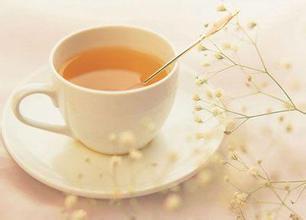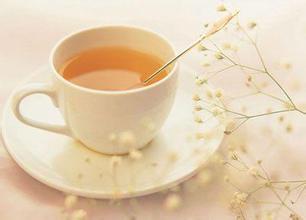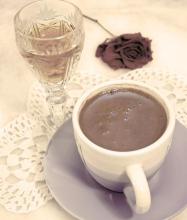Introduction to the grinding scale of taste treatment method for the characteristics of Ecuadorian coffee flavor varieties
People always habitually look at things in dichotomy, good and bad, good and evil, good and bad. The same is true in the world of coffee. "arabica" coffee beans are always classified as "good", while its distant relative "Robusta" coffee beans are often classified as "bad". We may describe it this way: if Arabica is a gift from angels, Robusta is like the booger of the devil, always despised and spurned by coffee gluttons.
Why is Robusta so notorious? Robusta beans, which are round in appearance and look like soybeans at first glance, are also known as thick and strong beans. They have strong resistance to diseases and insect pests, large output and low price. The boutique coffee industry used to have a very poor impression of Robusta because it usually does not have a charming and meticulous flavor. The bigger problem is that because the setting is a low-cost product, most of the planting methods are very rough, resulting in a bad smell. It often smells like dirt, dirt, and sometimes even a smell like charred tires and burning plastic. Ten years ago, I had a chance to taste several cheap Vietnamese robusta beans, some of which were unforgettable because they were like charred wheat tea flavored with tires, and I couldn't help spitting them out with the other nine bad flavors. I don't want another sip.
Wow! If Robusta beans are so bad, why talk about it? That's a good question! As mentioned at the beginning of this article, everything has its advantages and disadvantages. Good beans take you to heaven, rotten beans let you hang your heart! This is true of Arabica, and Robusta is no exception! In fact, under the tide of boutique coffee in recent years, exquisite robusta beans with high standard treatment have appeared in the world! The representative of boutique India Kappi Royale beans is India's Robusta (Robusta "Kappi Royale" Robusta).
In 1535, Frey Thomas de Belanga of Spain and others stumbled upon the Galapagos Islands. Thomas was born in 1487 on the Douro River in the province of Soria, Spain, and was the fourth bishop of Panama at that time. He was ordered to go to Peru. When his ship set sail from Panama on February 23, under the impact of a strong current, they were taken to the unknown sea, and on March 10, they discovered a small island in the Galapagos Islands. At that time, there were only two days of fresh water left on the ship, and the sailors landed in lifeboats and found a large number of seals, sea turtles, giant tortoises that could carry people, and iguanas that looked like venomous snakes, but they did not find fresh water, so they sailed to another larger island more than 20 kilometers away. As there was still no wind, it took them several days to get there, and the water ran out quickly and they had to starve, including the horses on the boat without grass.
When Thomas and the crew landed on the island, they were frantically looking for water and were so thirsty that they squeezed juice from the fat leaves of the cactus to drink. At last a source of water was found in a rocky gully. Thomas attributed it to the gift of God, because it was good Friday, and they had piously celebrated mass before they set out in search of water. But Thomas will never know that the island they landed on is the only island in the Galapagos archipelago that has plenty of fresh water, today's St. Cristobal Island (Saint Cristobal).
St. Cristobal is a larger island in the Galapagos archipelago. At 410m above sea level, there is a small lake called El.Junco, which forms streams along the rocks and volcanic rocks on the southern slope of the island. Mineral-rich fresh water moistens the land of St. Cristobal, keeping the soil moist and fertile. It provides the most rare conditions for the growth of coffee here.
In 1875, 340 years after Frey Thomas de Belanga discovered the island, an indigenous man named Corvus came to St. Cristobal, where he established the Hasunda Coffee Garden and planted about 100 hectares of Arabian bourbon coffee trees. Because the plantation is located between 140m ~ 275m above sea level and the climate is equivalent to that of inland 915m ~ 1830 m, the unique geographical conditions are very suitable for the growth of super hard coffee beans (SHB) with high acidity, so this high-quality coffee has settled down here.

Important Notice :
前街咖啡 FrontStreet Coffee has moved to new addredd:
FrontStreet Coffee Address: 315,Donghua East Road,GuangZhou
Tel:020 38364473
- Prev

Flavor treatment of Guatemala Antigua Coffee with strong flavor introduction to the taste of varieties in producing areas
In Guatemala, it is famous for producing high-quality beans, which is the highest elevation and dry climate in the coffee growing area of the country. Located in a rare non-volcanic area in China and the United States, the mountains are potholed and the terrain is very dangerous. Although the elevation is nearly 2000 meters, the warm, dry air from the plains of Mexico protects coffee trees in this area from frost.
- Next

Introduction of Panamanian Cupid Coffee Flavor and taste characteristics Variety production area treatment method
Manor: Lelida 10 Lerlda Estate Lot10 treatment: White honey treatment Honey varieties: Kaduai Catuai score and cup test CuppingScore:87 lime,floral coconut,clean,sparkling,mediumbody lime, coconut flower scent, clean, lively acid, medium alcohol thickness unique Colombian red wine treatment method Colombia
Related
- Detailed explanation of Jadeite planting Land in Panamanian Jadeite Manor introduction to the grading system of Jadeite competitive bidding, Red bid, Green bid and Rose Summer
- Story of Coffee planting in Brenka region of Costa Rica Stonehenge Manor anaerobic heavy honey treatment of flavor mouth
- What's on the barrel of Blue Mountain Coffee beans?
- Can American coffee also pull flowers? How to use hot American style to pull out a good-looking pattern?
- Can you make a cold extract with coffee beans? What is the right proportion for cold-extracted coffee formula?
- Indonesian PWN Gold Mandrine Coffee Origin Features Flavor How to Chong? Mandolin coffee is American.
- A brief introduction to the flavor characteristics of Brazilian yellow bourbon coffee beans
- What is the effect of different water quality on the flavor of cold-extracted coffee? What kind of water is best for brewing coffee?
- Why do you think of Rose Summer whenever you mention Panamanian coffee?
- Introduction to the characteristics of authentic blue mountain coffee bean producing areas? What is the CIB Coffee Authority in Jamaica?

